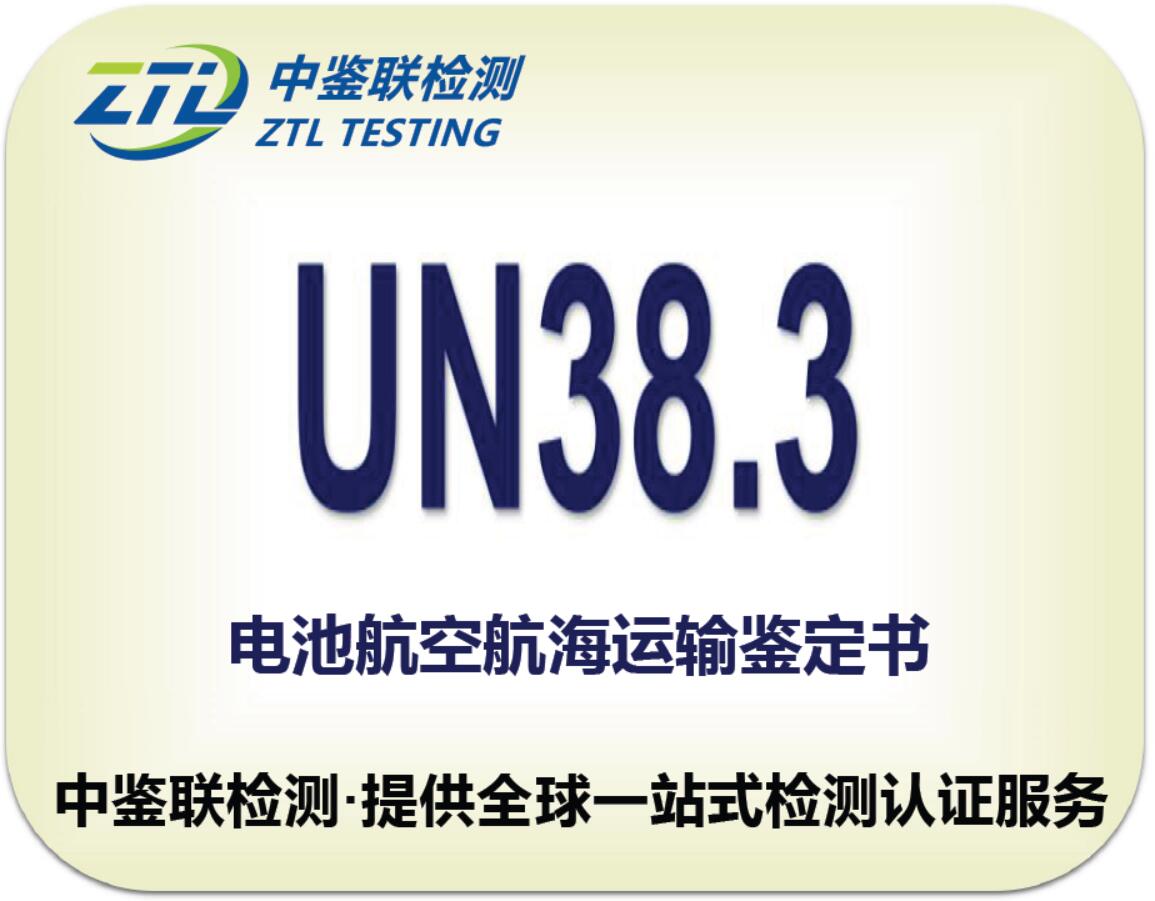
According to the requirements of civil aviation regulations, all batteries and products containing batteries must be certified by UN38.3 air transport. The most important thing is that each type of UN38.3 must be applied for by a single model. The report can be provided by a third-party testing agency designated by Civil Aviation, and the International Air Transport Association (IATA) can also be provided by a battery manufacturer with testing capabilities. If this test report cannot be provided, civil aviation will ban lithium batteries for air transportation.
The UN38.3 Cargo Air Transport Appraisal Certificate and Cargo Nautical Transport Appraisal Certificate are both valid for the current year, that is, the validity period is up to December 31 of that year, and it is mandatory to renew each year on January 1!
Preparation materials for applying for UN38.3 certification
1. Fill in the application form
2. Fill in the power of attorney, lithium battery transportation statement and random documents
3. Battery Specification
4. Packing picture (outer packing picture, open outer packing picture, inner packing picture)
5. Test samples (need to have the product's capacity, watt-hour, voltage and other parameters printed on it)
6, battery specification
(The above materials can provide templates)
UN38.3 test project
T.1 height simulation test
Under the conditions of pressure ≤11.6kPa and temperature 20 ± 5 ℃, it can be stored for more than 6 hours without leakage, exhaust, disintegration, cracking, and burning.
T.2 thermal test
High and low temperature impact test under the conditions of 72 ± 2 ℃ and -40 ± 2 ℃, the storage time at the limit temperature is ≥6h, the high and low temperature conversion time is ≤30min, the impact is 10 times, and the room temperature (20 ± 5 ℃) is stored for 24h, The total test time is at least one week
T.3 Vibration test
Within 15 minutes, complete a reciprocating logarithmic frequency sweep sinusoidal vibration from 7Hz to 200Hz, and within 3h complete 12 times of three-dimensional vibration; the logarithmic frequency sweep is: from 7Hz to maintain a maximum acceleration of 1gn until the frequency reaches 18Hz. Then maintain the amplitude at 0.8 mm (total offset of 1.6 mm) and increase the frequency until the maximum acceleration reaches 8 gn (frequency is about 50 Hz). Keep the maximum acceleration at 8gn until the frequency increases to 200 Hz.
T.4 Impact test
150g, 6ms or 50g, 11ms half-sine impact, 3 times in each installation direction, a total of 18 times;
T.5 External short-circuit test
Short circuit at 55 ± 2 ℃ and external resistance <0.1Ω. The short-circuit time lasts 1h after the battery temperature returns to 55 ± 2 ℃.
T.6 Impact test
A 9.1kg weight was dropped from a height of 61 ± 62.5px on a battery with a 15.8mm round rod, and the surface temperature of the battery was detected.
T.7 Overcharge test
Under the conditions of 2 times the maximum continuous charging current and 2 times the maximum charging voltage, the battery is overcharged for 24 hours.
T.8 Forced discharge test
The battery is connected in series with a 12V DC power supply for forced discharge at the maximum discharge current.
Shenzhen Zhongjianlian Testing Technology Co., Ltd. (English abbreviation: ZTL TEST, Chinese abbreviation: Zhongjianlian Testing) is an excellent new type of testing and certification agency, which can provide battery CE certification, battery KC certification, battery FCC certification, battery directive, Battery PSE certification, battery CB certification, battery BSMI certification, battery UN38.3 certification, battery MSDS report, EN62133 test, GB18287, RoHS certification, REACH certification, battery quality inspection report, mobile power quality inspection report.
Shenzhen Zhongjianlian Testing Agency, focusing on global international certification, is an authoritative testing agency you deserve and trust!